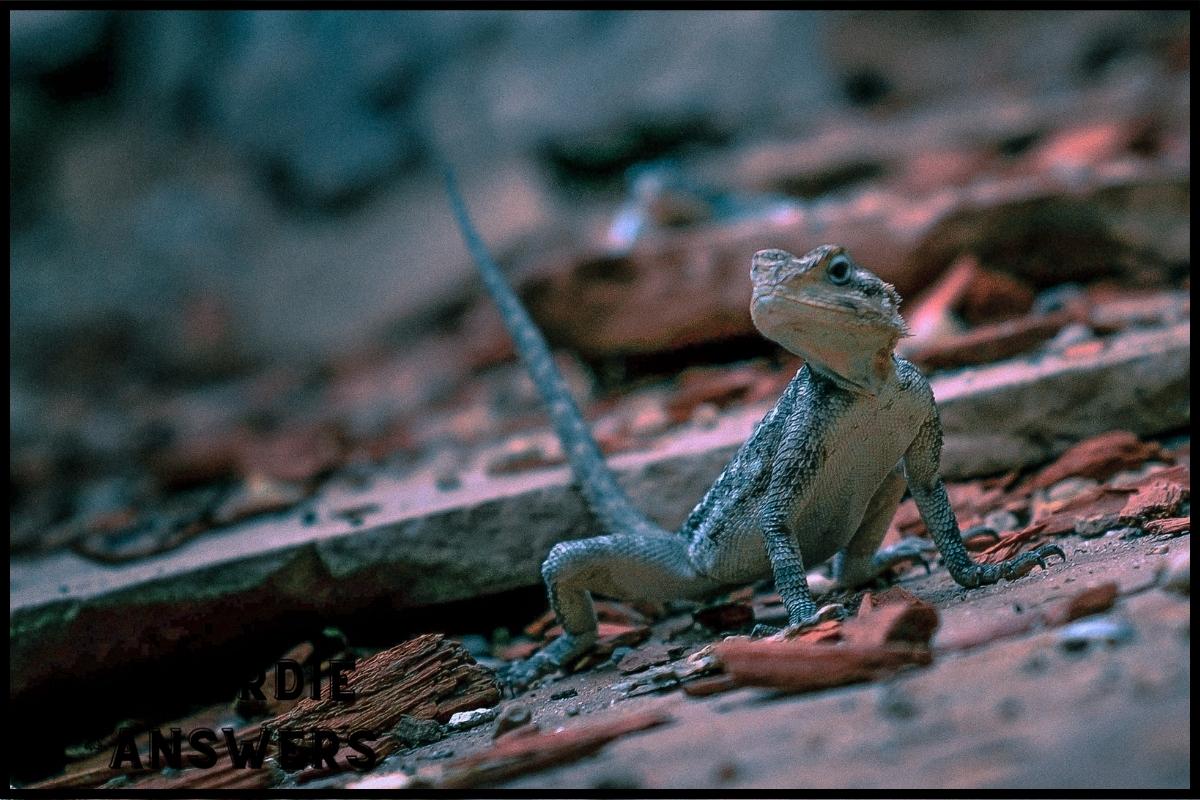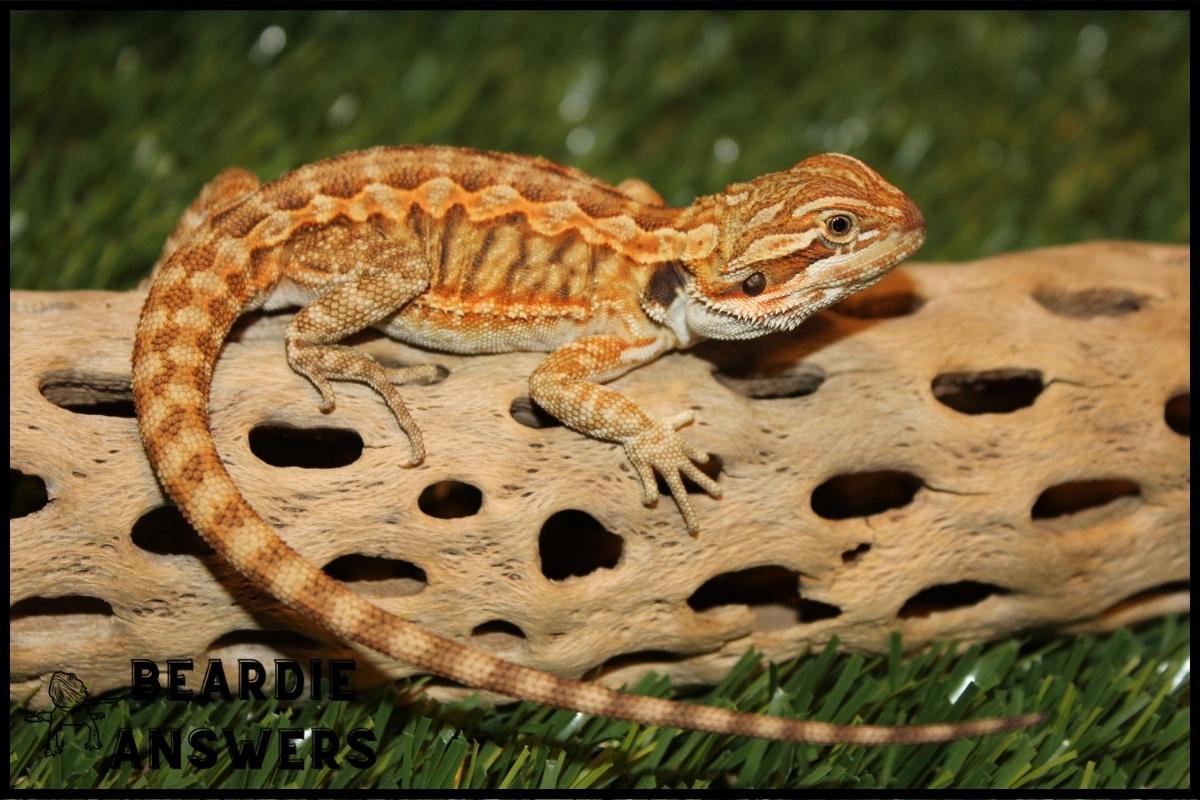Brumation is a hibernation-like state that bearded dragons enter into during the colder months of the year. Signs of brumation in bearded dragons may include decreased appetite, lethargy, and reduced activity levels. These changes in behavior are a normal part of the bearded dragon’s natural cycle.
What You'll Learn
What Is Brumation?
Brumation, a survival technique used by many reptiles including bearded dragons, is an extended period of dormancy in which they slow down their metabolism and conserve energy. It’s often likened to the concept of hibernation; however, there are distinct differences between the two terms.
While both brumation and hibernation involve animals entering a state of semi-consciousness or sleep for an extended period of time, brumation requires much less preparation than does hibernation. Prevention strategies such as temperature control can also be implemented in order to discourage your pet from entering this dormant state too early.
In order to understand why some reptiles go into brumation, it helps to look at how their wild counterparts survive during winter months when food sources become scarce. When temperatures drop significantly below what is comfortable for them, these reptiles enter a semi-dormant state known as torpor in which they dramatically reduce their metabolic rate and activity level until warmer weather returns.
This enables them to conserve energy so that they don’t use up all their resources before springtime arrives with its abundance of food again. By understanding the natural urge certain species have towards brumation when faced with unfavorable conditions, we can begin looking at ways to regulate those factors around our dragon pets – whether through diet changes or environmental adjustments -in order to prevent them from going into this forced dormancy prematurely or unnecessarily.
To explore why do bearded dragons brumate? further, let us now consider the common triggers associated with this process.
Why Do Bearded Dragons Brumate?
Brumation is a natural process that bearded dragons undergo to survive in their environment. It’s an adaptation of hibernation, where the dragon conserves its energy and slows down its metabolism until temperatures rise again. During brumation, these reptiles may remain inactive for weeks or even months at a time.
Here are some things to consider about why bearded dragons brumate:
- Heat Requirements: During cold periods, day-time temperatures might not reach optimal levels for activity and basking. To conserve energy, they enter into a state of dormancy until it warms up enough for them to be active again.
- Lighting Needs: Bearded Dragons need certain amounts of light daily in order to regulate hormones and maintain healthy body cycles; however, they don’t always get access to those types of lighting conditions during colder months when the days are shorter.
Lastly, there are also environmental factors such as food availability and weather patterns that can influence when Beardies decide to go through brumation. By entering into this dormant period, these animals give themselves the best chance of survival under their current conditions.
With all this considered, it’s clear why bearded dragons must rely on brumation from time to time – regardless if we understand it or not! Therefore, understanding when do bearded dragons brumate is key in providing your pet with proper care throughout each season.
When Do Bearded Dragons Brumate?
Bearded dragons typically begin to brumate in the late fall and winter months when temperatures drop and light cycles decrease.
Brumation is a state of dormancy, similar to hibernation in other animals but usually lasts for several weeks rather than months.
How long a bearded dragon spends in this dormant state depends on the individual animal’s age, health, weight, and environment.
During brumation, bearded dragons will become less active as they conserve energy by slowing their metabolism down.
They may also eat very little or not at all during this period because their appetite decreases dramatically.
As such, it’s important that any food your pet has access to be nutrient-dense so they don’t lose too much weight while in this state.
Additionally, providing shallow dishes filled with clean water can help maintain hydration levels throughout brumation.
It’s essential to monitor your bearded dragon closely during these periods of reduced activity if you suspect they are entering into a brumative state.
Signs like decreased appetite lethargy and reduced activity levels should be observed so necessary steps can be taken to ensure their safety and well-being.
With that said, now let’s explore what are the signs of brumation?
What Are The Signs Of Brumation?
When it comes to signs of brumation in bearded dragons, decreased appetite, lethargy, and reduced activity levels are important things to look out for.
A lack of appetite, being less active than usual, and seeming lethargic can all be indicators of brumation.
It’s important to pay attention to these signs so you can give your dragon the best care possible.
Decreased Appetite
One of the most common signs of brumation in bearded dragons is a drastic decrease in appetite.
Dietary changes such as no longer eating their regular meals, or not wanting to eat at all, can be an indication that they are entering into this less active state.
Temperature control also plays a role here; if temperatures drop too low for them, they may go off their food to conserve energy and remain inactive until it warms up again.
With these factors in mind, it’s important to keep an eye on your dragon’s diet during colder months – any sudden shift could indicate that something isn’t quite right.
Lethargy
When it comes to brumation, lethargy is another common symptom.
Your dragon may become more sluggish than usual and even appear drowsy or sleepy throughout the day.
This increased sleepiness can be attributed to their hibernation effects as they conserve energy during this time of year.
You might also find that your dragon spends a lot more time buried in their substrate or hiding under plants or other decorations – these are all signs that they’re feeling extra weary and need some rest.
All in all, if you notice any drastic shifts in behavior like this, it’s best to check up on them and make sure everything is okay!
Reduced Activity Levels
In addition to lethargy, another common sign of brumation is reduced activity levels.
During this time, you may notice your dragon becoming more sedentary and not wanting to move around as much.
This can be due to the lower temperatures and other environmental changes that occur during the season.
As a result, they’ll conserve energy by staying in one spot for longer periods of time.
If you observe any drastic decreases in movement from your pet, it’s important to make sure everything is okay and check up on them if necessary.
How Long Does Brumation Last?
Brumation is a natural period of rest and inactivity for bearded dragons, which usually happens during the cooler months. During brumation, you may notice changes in your dragon’s behavior such as decreased appetite, lethargy, and reduced activity levels. It’s important to be aware of how long brumation lasts so that you can help your pet stay healthy during this time.
The duration of brumation varies greatly depending on environmental factors like temperature fluctuations and dietary changes. In general, though, it typically lasts between two to four months.
For example, if the temperatures dip below 70 degrees Fahrenheit (21 Celsius), your bearded dragon may become sluggish or sleep more than normal, which could indicate they are entering into brumation mode. On the other hand, when temperatures start to rise above 75-80°F (24-27°C) after winter sets in then their metabolism will kick back up again signaling an end to brumating season.
It’s important to understand what signs to look out for during brumation so that you can monitor your dragon’s health throughout this period. This includes providing them with plenty of water and maintaining adequate humidity levels in their enclosure as well as offering food every few days even if it isn’t eaten right away.
With these simple steps and some patience you’ll be able to help ensure your bearded dragon stays safe and healthy during its period of hibernation!
How Can I Help My Bearded Dragon During Brumation?
Winter months can be a tough time for our scaly friends, as they enter brumation. While this is a normal part of their life cycle, there are still things you can do to help your bearded dragon during this period and ensure they stay healthy.
Just like hibernation in mammals, brumation involves the body shutting down certain functions and slowing metabolism – but it doesn’t have to be an uncomfortable experience! Here’s what you should do:
- Regulate temperatures: Make sure your tank isn’t too hot or cold by monitoring its environment with a thermometer.
- Lighting adjustments: Bearded dragons need 12 hours of light each day while in brumation. Change up their lighting schedule accordingly.
- Provide food & water: Offer small amounts of food and make sure that fresh water is available at all times – even if your pet doesn’t seem interested in eating or drinking anything.
By following these simple steps, you’ll create a safe and comfortable space for your reptile companion so that they can get through brumation without any stress or discomfort.
Conclusion
Brumation can be a difficult time for your bearded dragon. But it’s also an important part of their natural cycle, so don’t worry if you see signs that they’re entering brumation.
As long as you provide them with the proper care and support during this period, they’ll come out in better health than ever before. It’s like a hibernation – think of them like a bear tucked away in its cave for wintertime.
With patience and love from us, our pet dragons will emerge healthy and strong when springtime comes around again!

Hi! My name is Bryan, I am the “one behind the words” here are BeardieAnswers.com. I believe that providing quality care and nutrition is the best way to ensure the health of your pet. Every beardie is special and deserves the best care and attention. If you have questions about your bearded dragon, please don’t hesitate to ask! View My Full Author Page




